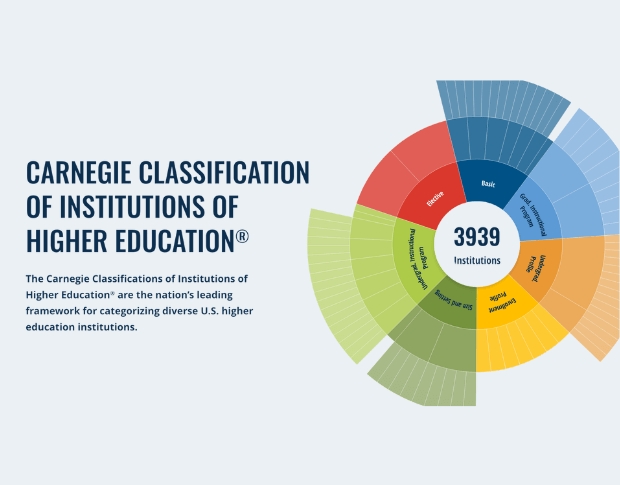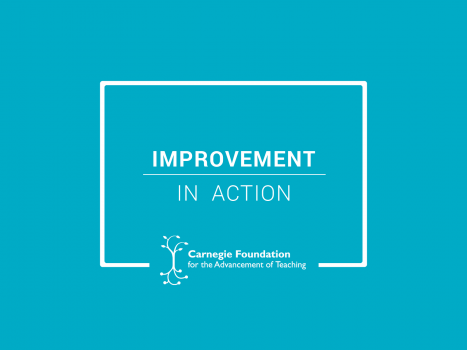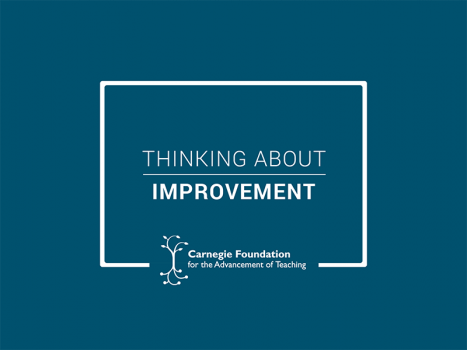The Carnegie Foundation’s fourth annual Summit on Improvement in Education is March 27-29, 2017. Over the course of three days, teachers, school and district leaders, researchers, foundations, and innovators will discuss their successes and challenges, and offer tools and tips related to effective school change. This is the first post in a series discussing key insights and reflections from Summit presentations.
Ask any district superintendents who have bucked the status quo in a quest for deep, meaningful change to show you their scars, and they’ll have stories to tell. Achieving a culture of enduring improvement that is integrated into the daily work of everyone at a school can be a long and bumpy process, and was doubly so not too long ago, before there were clear strategies for how to apply continuous improvement in education. Two trailblazers have reflected on how and where they entered the improvement journey, and distilled what they learned in order to make the process more manageable for other districts.
Custodians to superintendents — everyone is included
When Pat Greco became superintendent of the School District of Menomonee Falls (SDMF), Wisconsin, in 2011, she had less than six months to start showing progress. The 4,000-student district in the Milwaukee area had one of the highest suspension rates in the region; low participation in Advanced Placement; and huge gaps in achievement by race, ethnicity, and income. Menomonee Falls High School had already failed once to meet its goals under No Child Left Behind; a second notice from the U.S. Department of Education would classify the school as “in need of improvement,” and set in motion a series of corrective actions.
Fortunately, Greco had done her Ph.D. on the topic of instructional improvement and strategic planning, and knew where to look for information — but that wasn’t enough. Although she found a solid body of literature on the subject, most of it didn’t pertain to education. “I had to look across industries to how is it applied in healthcare and how is it applied to other industries around improvement methodologies,” recalled Greco, “and how do I, as a school leader, get trained in that?”
What she did was to fill leadership openings with people who, like her, had a background in improvement; tap principals and department leaders viewed as “strong, flexible, and willing to move,” and bring in outside trainers to teach improvement science methods and adapt them to the district. These leaders, in turn, were tasked with training all 300 teachers in the district, with the eventual goal of including everyone from food service workers and front office staff to human resources employees and the school board.
Most districts only think of improvement in terms of teaching and learning, said Greco, which boosts results in the short term, but doesn’t address the root problems. For that, the entire organization has to be involved and committed, including the students. Being user-centered is a key element of continuous improvement, along with identifying a problem, setting a specific improvement goal, researching potential solutions, and conducting rapid cycles of testing and evaluation to make sure the interventions are working.
“It changes how you think. It’s not a program, it’s a change to your thinking process,” she explained. “We’re producing expert problem solvers.”
By the end of the 2014-15 school year, the district had a 98 percent high school graduation rate, up from 96.6 percent five years earlier; Advanced Placement participation jumped by 157 percent, while the passing rate increased by 179 percent; and suspensions fell by nearly two-thirds.
Slow down and be systematic
A decade earlier, in a community barely 15 miles away, Superintendent JoAnn Sternke had set two ambitious goals for Pewaukee School District: increase the high school graduation rate to 98 percent and raise the college-going rate to 85 percent. When student achievement plateaued in 2006, Sternke felt that she had leveraged everything possible from the district’s strategic plan and begin looking for something more comprehensive. She found it in the Baldrige Performance Excellence Program, an improvement framework and national award, named in honor of former U.S. Commerce Secretary Malcolm Baldrige.
Although originally designed to improve business competitiveness, the framework criteria seemed, to Sternke, to be very applicable across all sectors, including school systems. She liked that it focused more on “deploying a plan than just creating a plan,” and saw it as an entry point to creating “more opportunities for improvement.”
Sternke started sending district leaders through the process of becoming trained examiners in the Baldrige method. In this capacity, they saw how it was being applied in a variety of settings, such as hospitals, manufacturers, and even some schools. The training gave staff a working knowledge of the framework and a common language to use when they began discussing how to address problems in the district. They seemed to welcome the structure, which established seven categories of excellence: leadership; strategic planning; customer focus; measurement, analysis, and knowledge management; workforce; operations; and results.
“Prior to that, I would latch onto any cool idea I ran across in the name of getting better. I think I was an innovator of just,” here Sternke pauses momentarily, “using cool ideas. I wasn’t systematic about it.”
You can stop chasing improvement. You actually lead improvement.
In 2007, Pewaukee applied for the Wisconsin Forward Award for Excellence at Work, a state version of the Baldrige award. The 50-page application described how the 2,100-student district had begun implementing the framework by setting clear, specific goals and outlined a strategy for achieving them. The district didn’t win that year, but the feedback report prepared by the review team gave them an unvarnished description of what was and wasn’t working, identified missing pieces of their improvement plan, and offered suggestions on priorities and places to take action. Sternke says the feedback recommitted everyone to the process.
In 2013, Pewaukee became one of two organizations, and the seventh school district ever, awarded the Malcolm Baldrige National Quality Award. High school graduation had met the 98 percent goal, surpassing state and national levels; and college going rates increased from 68 percent to more than 90 percent at two- and four-year colleges combined.
Not surprisingly, Sternke and Greco have similar takeaway messages for other districts considering an improvement approach to change. It’s a deliberate, reflective process. “I’ve had to learn that you have to go slow to go deep,” said Sternke. Go too fast, she warned, and key activities might not be implemented with the fidelity they need, such as determining what to measure to learn if a plan is making a difference for student outcomes, and figuring out the most effective way to measure them. “This is going to be a shift in thinking,” agreed Greco, but the upside, she added is that “you can stop chasing improvement. You actually lead improvement.”
January 26, 2017
Engaging students in learning through ambitious instruction is a chief focus of educational reform and policy in the US and around the world. The University of Michigan and the Carnegie Foundation created MOOCs to support teams of educational leaders in pursuit of this goal.
February 8, 2017
User-centered design is key to developing meaningful change to improve student achievement, and networked improvement communities help ensure and maintain the focus on human needs.







